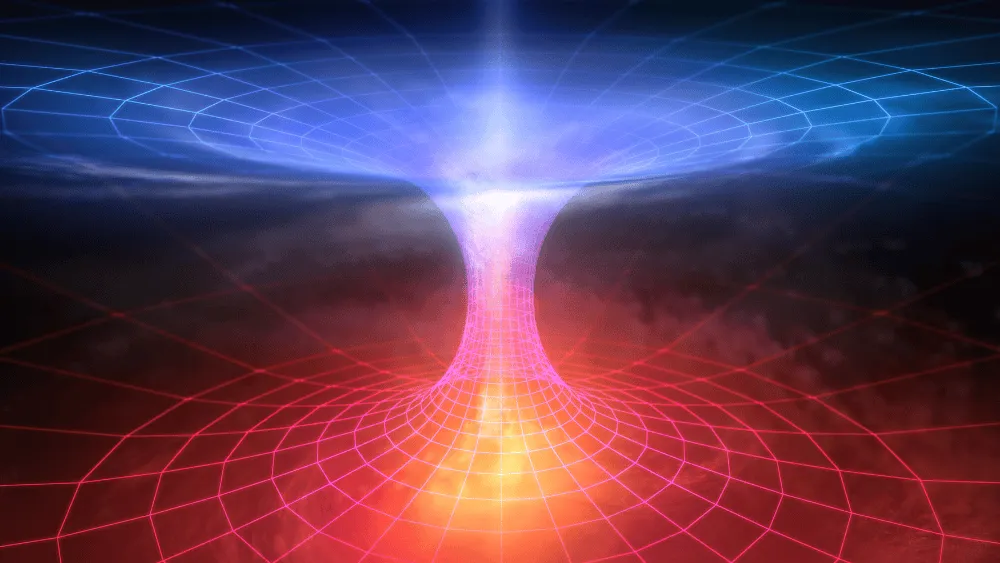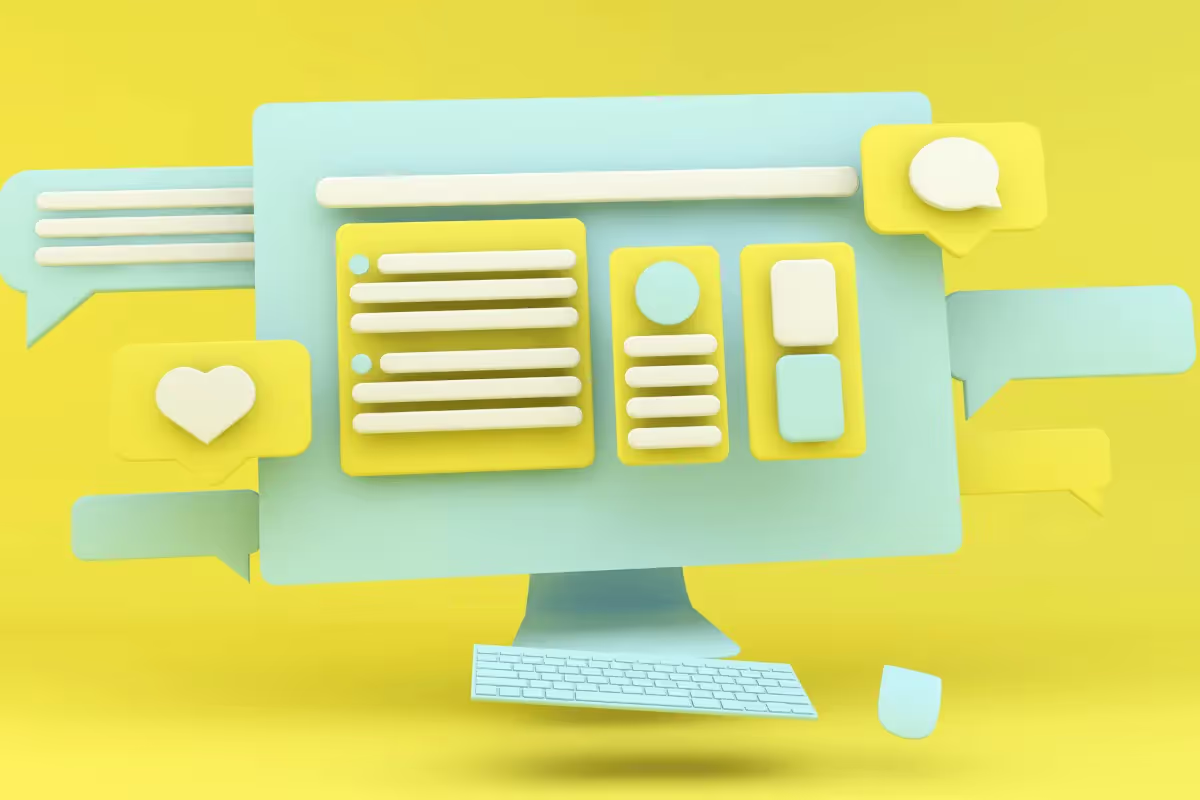The field of computing has experienced significant evolution since the inception of enormous, room-filling machines reliant on vacuum tubes, leading to the development of quantum mechanical systems.
Through the development of transistors to microprocessors, we have observed remarkable progress that has profoundly influenced the digital landscape. As we continue to explore the limits of computation, we are now entering a novel phase characterised by quantum computing.
These advanced devices promise computational speeds that surpass those of classical computers, yet they operate on principles that seem more akin to science fiction than to everyday reality.
Understanding Quantum Computing
Is a rapidly emerging field of technology that leverages the principles of quantum mechanics "QM" to perform calculations that are beyond the capabilities of conventional computers.
Quantum computing has the potential to revolutionize various fields by solving problems that are currently intractable for classical computers, including areas such as cryptography, optimization, drug discovery and complex system simulations.
How do Quantum Computers Function?
- Quantum computers function based on the principles of QM, which is a fundamental quantum theory in physics that describes nature at the smallest scales, such as that of subatomic particles.
- Unlike classical computers, which use bits as the smallest unit of data (represented as 0 or 1), quantum computers use quantum bits or qubits.
Classical Computing vs. Quantum Computing
To understand why quantum computing is revolutionary, we first need to explore how classical computers work and how they shape our lives.
💻 Classical Computers
- Classical computers process information using bits - tiny units of data that exist in one of two states: 0 or 1.
- These bits are the foundation of every operation a traditional computer performs, but qubits in a quantum processor can represent more information.
By manipulating sequences of qubits using quantum circuits, computers can solve complex problems, run software and perform countless tasks.
For decades, improvements in classical computing have come from miniaturizing transistors - the building blocks of processors, however, as we reach the physical limits of how small we can make these transistors, we need a new way to boost computing power.
-------------------------------------------------------
💻 Quantum Computing
- Unlike classical computers, which use bits, quantum computers operate with qubits (quantum bits).
- These qubits aren’t just 0 or 1 - they can exist in multiple states at once, thanks to superposition.
- This ability gives quantum computers the potential to perform complex calculations exponentially faster than classical machines.
Additionally, quantum computing utilizes entanglement, a phenomenon where qubits become interconnected such that the state of one can depend on the state of another, no matter the distance separating them. This can potentially lead to exponential increases in processing power for specific tasks.
Key Principles of Quantum Computing
QM is at the heart of quantum computing - here are the four fundamental principles that make it work:
1. Qubits: The Building Blocks of Quantum Computers
- A qubit is the quantum version of a bit. While a classical bit is like a light switch (either on or off), a qubit is more like a dimmer switch - it can exist in a superposition of both on and off states at the same time, a principle that is fundamental in quantum physics
- This property allows quantum computers to process vast amounts of data simultaneously. Imagine searching a massive database: a classical computer must check each entry one by one, but a quantum computer can explore multiple possibilities at once.
-------------------------------------------------------
2. Superposition: Computing in Multiple States
- In classical computing, a bit is always in a definite state (0 or 1). In contrast, a qubit can be 0, 1, or both at the same time due to superposition. This enables quantum computers to process more information in parallel, vastly increasing their computational power.
💡 Example: Think of a coin spinning in the air. While it's spinning, it’s not just heads or tails - it’s both until it lands.
-------------------------------------------------------
3. Entanglement: The Quantum Connection
- Entanglement is one of the strangest and most powerful aspects of quantum computing. When two qubits become entangled, their states become linked, no matter how far apart they are. If you measure one entangled qubit, the other instantly takes on a correlated state, even if they are light-years away, demonstrating the concept of quantum entanglement.
- Entanglement allows quantum computers to perform incredibly fast operations by linking qubits in complex ways.
💡 Example: Imagine having a pair of magic dice that always show the same result, no matter how far apart they are. If you roll one and it lands on a 6, the other will also show a 6 - instantly and mysteriously!
-------------------------------------------------------
4. Quantum Interference: Enhancing Computation
- Quantum systems are extremely delicate, and even the slightest disturbance can affect their state, posing challenges for computer science. Quantum interference is used to control and manipulate qubits so that the most useful results emerge while undesired outcomes cancel out.
💡 Example: Think of noise-cancelling headphones, they produce sound waves that interfere with and cancel out unwanted noise. Similarly, quantum computers use interference to focus on the right computations.
-------------------------------------------------------
Bonus - Quantum Gates: Manipulating Qubits
- Quantum computers utilize quantum gates to manipulate qubits. These gates change the qubits' states through operations such as the Hadamard gate, which puts a qubit into superposition, and the CNOT gate, which can entangle qubits.
- By combining different quantum gates, quantum algorithms can execute complex computations that are infeasible for classical computers.
Types of Quantum Computers
There are several different approaches to building quantum computers and some of the most promising include:
A) Superconducting Qubits
- Used by companies like Google and IBM, these qubits operate at extremely low temperatures using superconductors.
- These systems use tiny circuits cooled to near absolute zero (-273.15°C) where quantum effects become dominant.
✅ Advantages: Mature technology with demonstrated scaling capabilities, fast gate operations, and manufacturing leverages existing semiconductor industry techniques.
❌ Challenges: Requires extensive cooling infrastructure (dilution refrigerators) and susceptibility to environmental noise.
Latest Developments: IBM's Eagle II processor (2024) achieved 1024 qubits with improved coherence times, while Google's Lynx processor demonstrated error correction capabilities across 300+ qubits.
-------------------------------------------------------
B) Trapped Ion Qubits
- Companies like IonQ and Honeywell (now Quantinuum) use this approach, where individual ions are held in place using electromagnetic fields.
- Atoms are stripped of electrons (ionized) and then suspended in ultrahigh vacuum using electromagnetic traps.
✅ Advantages: Exceptionally long coherence times, high-fidelity operations, and identical, naturally occurring qubits.
❌ Challenges: Traditionally slower gate operations compared to superconducting systems, though recent advances have narrowed this gap.
Recent Breakthroughs: Quantinuum's H2 system achieved a quantum volume of 65,536 in early 2024, while IonQ's Forte systems demonstrated 35 algorithmic qubits with record-low error rates.
-------------------------------------------------------
C) Photonic Quantum Computing
- Uses light particles (photons) to carry quantum information, making it highly scalable.
- Information is encoded in various properties of photons such as polarization, path, or time-bin.
✅ Advantages: Can operate at room temperature, naturally resistant to decoherence and has potential for integration with existing optical fibre networks.
❌ Challenges: Creating deterministic single-photon sources and implementing reliable two-qubit gates.
Recent Progress: Xanadu's Borealis system demonstrated quantum computational advantage with 216 squeezed-state qubits, while PsiQuantum's integrated photonic approach achieved 1000+ connected photonic qubits in their prototype systems.
D) Topological Quantum Computing
- An approach pursued by Microsoft and others that uses exotic quasiparticles called anyons.
- Aims to create inherently error-resistant qubits through topological protection.
✅ AdvantagesCould potentially provide built-in error correction in quantum cryptography, reducing the overhead needed for fault tolerance.
❌ Challenges: The fundamental quantum particles (Majorana zero modes) required for this approach are still being investigated.
Status Update: Microsoft reported significant progress in 2024 with their Azure Quantum platform, demonstrating promising results in creating and manipulating Majorana zero modes in nanowire systems.
-------------------------------------------------------
E) Neutral Atom Qubits
- Uses neutral atoms arranged in arrays using optical tweezers.
- Information is encoded in the electronic or nuclear spin states of the atoms.
✅ Advantages: Highly scalable to large numbers of qubits, moderate coherence times, and programmable qubit arrangements.
❌ Challenges: Ensuring reliable atom loading and maintaining quantum control over large arrays.
Recent Advancements: QuEra's Aquila system demonstrated 1000+ coherent neutral atom qubits in 2024, while Pasqal's commercial systems achieved 400+ qubits with sophisticated qubit routing capabilities.
-------------------------------------------------------
F) Silicon Spin Qubits
- Uses electron or nuclear spins in silicon, leveraging existing semiconductor manufacturing technology.
✅ Advantages: Potential for high-density qubit integration and compatibility with classical electronics.
❌ Challenges: Achieving uniform qubit properties and maintaining coherence during operation.
Recent Progress: Intel and academic partners demonstrated 50+ connected spin qubits in 2024 with significantly improved coherence times, positioning silicon as a promising platform for scalable quantum computing.
Each approach continues to advance rapidly, with hybrid systems and new qubit types emerging as promising directions for achieving practical quantum advantage in various applications.
Quantum Advantages vs. Disadvantages
Quantum computing is still in its early stages, and while it shows incredible promise, researchers face several significant challenges. Let's take a closer look at both sides of the quantum computing equation:
✅ Advantages of Quantum Technology
1. Exponential Processing Power
- Quantum computers can potentially solve certain problems exponentially faster than classical computers thanks to superposition and entanglement.
- For example, a 300-qubit quantum computer could theoretically represent more states simultaneously than there are atoms in the observable universe!
- This massive parallelism enables quantum computers to tackle previously intractable problems in optimization, simulation, and cryptography.
-------------------------------------------------------
2. Revolutionary Problem-Solving Capabilities
- Quantum Simulation: Quantum computers can model molecular and chemical interactions with unprecedented accuracy, potentially revolutionizing drug discovery, materials science, and clean energy research.
- Optimization Problems: From supply chain management to financial modelling, quantum computers excel at finding optimal solutions among vast possibilities.
- Machine Learning: Quantum machine learning algorithms show promise for pattern recognition and quantum data analysis beyond classical capabilities.
-------------------------------------------------------
3. Cryptographic Implications
- Quantum computers could break many current encryption systems using Shor's algorithm, necessitating the development of quantum-resistant cryptography.
- Conversely, quantum key distribution offers the potential for theoretically unhackable communication channels based on the fundamental principles of QM.
-------------------------------------------------------
4. Reduced Energy Consumption
- While current quantum computers require significant energy for cooling, mature quantum technologies could potentially perform certain calculations with dramatically lower energy costs than classical supercomputers tackling the same problems.
❌ Disadvantages of Quantum Software
1. Decoherence Challenges
- Qubits are extremely fragile and easily disturbed by their environment - heat, electromagnetic radiation, or even slight vibrations can cause them to lose their quantum properties.
- This "decoherence" problem means quantum computers must be heavily isolated and maintained at extremely cold temperatures (near absolute zero for many implementations).
- Think of it like trying to build a house of cards in a windstorm - the slightest disruption can collapse the entire quantum state!
-------------------------------------------------------
2. Error Correction Complexity
- Quantum calculations are highly prone to errors, requiring sophisticated error correction methods.
- Unlike classical bits, qubits can't be simply copied due to the "no-cloning theorem" of quantum mechanics.
- Current approaches require multiple physical qubits to create a single logical qubit with error protection, potentially requiring thousands of physical qubits for each usable logical qubit.
- This creates a significant overhead that makes scaling quantum computers particularly challenging.
-------------------------------------------------------
3. Scalability Hurdles
- Building large-scale quantum computers with thousands or millions of qubits is extremely difficult from both engineering and physics perspectives.
- Challenges include:
- Maintaining coherence across large qubit arrays
- Designing control systems that can precisely manipulate individual qubits without disturbing neighbouring ones
- Creating quantum interconnects that allow qubits to communicate efficiently
- Developing manufacturing processes that can produce consistent, high-quality qubits at scale
-------------------------------------------------------
4. Programming Complexity
- Quantum algorithms require fundamentally different approaches to programming compared to classical computing.
- There's currently a shortage of quantum software developers and accessible development tools.
- Many quantum algorithms offer advantages only for specific problem types, not general-purpose computing tasks.
-------------------------------------------------------
5. Cost and Accessibility Barriers
- Today's quantum computers are extraordinarily expensive to build and maintain.
- The cooling systems alone for superconducting quantum computers can cost millions of dollars, highlighting the challenges in research and development.
- Limited access to quantum hardware restricts research and application development to well-funded organizations.
-------------------------------------------------------
6. Noise and Stability Issues
- Even with the best error correction, quantum computations are susceptible to noise.
- Quantum systems may require frequent recalibration to maintain performance.
- Results from quantum computations often need to be verified using statistical methods, sometimes requiring multiple runs.
The Path Forward to Use Quantum Computing
Despite these challenges, the quantum computing field is making remarkable progress. Researchers are developing innovative approaches to tackle these limitations:
- Hardware Improvement: New qubit designs with longer coherence times and lower error rates are emerging regularly.
- Error Mitigation: Advanced techniques help extract useful results even from noisy quantum systems.
- Hybrid Approaches: Combining classical and quantum computing services to leverage the strengths of both.
- Quantum-Specific Algorithms: Developing new algorithms that work effectively even with limited qubit counts and some noise.
Applications of Quantum Computing
Quantum computing isn’t just theoretical - it has real-world applications across various industries.
1. Cryptography and Cybersecurity
Quantum computers could break modern encryption techniques by quickly solving problems that would take classical computers millennia. This could revolutionize security but also pose major risks.
💡 Tip: Researchers are developing post-quantum cryptography to prepare for this shift.
-------------------------------------------------------
2. Drug Discovery and Material Science
Quantum simulations can model molecular interactions at an unprecedented scale, leading to breakthroughs in pharmaceuticals, energy, and material science.
💡 Example: IBM’s quantum computer has been used to simulate molecules for drug discovery.
-------------------------------------------------------
3. Optimization Problems (Finance, Logistics, AI)
Quantum computing can solve complex optimization problems, such as supply chain management, financial modelling, and AI training.
💡 Example: Volkswagen has tested quantum algorithms for optimizing traffic flow in cities.
What is Quantum Mechanics?
Quantum mechanics is a fundamental theory in physics that describes the physical properties of nature at the scale of atoms and subatomic particles. It is the foundation upon which much of modern physics and chemistry is based, offering a framework for understanding the quantum behavior of matter and energy on the smallest scales.
Key Principles of Quantum Mechanics
1) Wave-Particle Duality:
Particles such as electrons and photons exhibit both wave-like and particle-like properties. This duality is a core concept in QM challenging classical intuitions about how particles behave.
2) Quantization:
Certain properties, such as energy, are quantized, meaning they can only take on discrete values. This is in contrast to classical physics, where energy can vary continuously.
3) Uncertainty Principle:
Formulated by Werner Heisenberg, this principle states that certain pairs of physical properties, like position and momentum, cannot be simultaneously known to arbitrary precision. The more accurately one is known, the less accurately the other can be known.
4) Superposition:
Particles can exist in multiple states or locations simultaneously until they are measured. This principle leads to phenomena such as interference patterns, which are explained by the superposition of multiple quantum states.
5) Entanglement:
Particles can become entangled, meaning the state of one particle is directly related to the state of another, no matter the distance between them. This phenomenon was famously referred to by Albert Einstein as "spooky action at a distance."
Conclusion - Quantum Computing
Quantum computing stands at the frontier of technological innovation, promising computational capabilities that were once thought impossible. Despite significant challenges from qubit fragility to error correction complexity, rapid advancements across multiple quantum technologies give reason for optimism.
The potential applications are transformative: revolutionizing drug discovery, redefining cryptography, solving complex optimization problems, and enabling new frontiers in AI.
The quantum future isn't just coming it's already beginning to take shape, promising to redefine what's computationally possible and opening doors to discoveries we can barely imagine.
Frequently Asked Questions
What is quantum computing in simple terms?
Quantum computing is a new type of computing that uses quantum mechanics to process information. Unlike classical computers, which use bits (0s and 1s), quantum computers use qubits, which can simultaneously be both 0 and 1 due to superposition.
Is AI quantum computing?
No, AI (artificial intelligence) and quantum computing are different fields. AI involves creating software that mimics human intelligence, while quantum computing is a new hardware approach that uses the principles of QM However, quantum computers could enhance AI in the future by speeding up computations for machine learning models.
What is an example of using quantum computing?
One practical example is in drug discovery. Pharmaceutical companies are using quantum computers to simulate molecules at an atomic level, which helps them discover new drugs faster than classical computers can. For example, IBM and Google have been working with research labs to model complex chemical reactions.
Who uses quantum computing?
Quantum computing is mainly used by tech companies, research institutions, and governments. Companies like IBM, Google, Microsoft, and D-Wave are leading the field, while financial firms, cybersecurity experts, and scientists are exploring its applications in finance, materials science, and cryptography.
What are quantum computing threats?
The biggest threat is its ability to break modern encryption systems, which could compromise online banking, secure communications, and national security. Governments and companies are working on post-quantum cryptography to stay ahead of these risks before quantum computers become powerful enough to pose a real threat.










